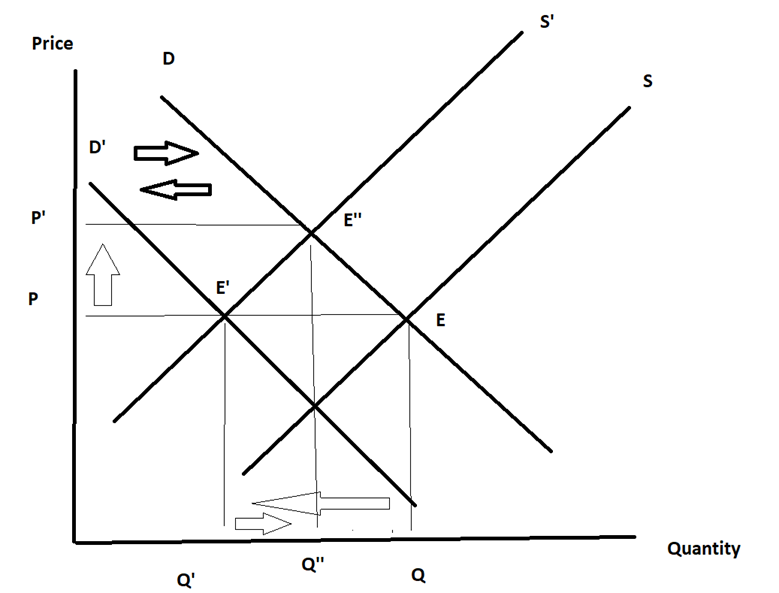The big discussion now in macroeconomics is whether supply or demand is driving current surge in inflation. This being an empirical question, the answer is typically provided using an econometric models. I will have later a post on these empirical analysis, but first I would like to put a compromise proposal out there based on elaboration on the terminology we use: While inflation is to a large degree demand driven, it is at the same time mostly caused by supply.[1]
What do I mean by the destination between “driven” and
“caused”? By demand driven inflation I mean that it is the increase in
demand that was the force that is recently pushing prices higher. By supply
caused I mean that the underlying cause of higher prices lies in supply.
How could this be true at the same time? Imagine that onset
of the pandemic has brought a large drop in demand and supply at the same time,
leaving quantity much lower but prices mostly unchanged.[2]
And then imagine that demand gradually returns to its “normal” position,
because the pandemic fades away, while supply fails to fully return to its
normal position, because it is (temporarily) unable. You end up with higher
prices and lower output than is normal.
What is driving/causing the higher prices, demand or supply?
From perspective of recent development, which is movement from E’ to E’’,
higher prices are driven by increase in demand, as that it the force
behind higher prices. This is also confirmed by the fact that both output and
prices increased at the same time. However, from broader perspective, moving
from E to E’’, it is the supply which is the cause of higher prices:
demand just returned to normal, while supply is still far from normal. Hence,
the distinction between “demand driven” and “supply caused”.
I might be naïve but I think this distinction could to a
large degree reconcile the two sides of the discussion. Why? I think each side
focuses on different facts when making their case. The “demand driven” camp
points out that output has recently increased and so did prices, suggesting
increase in demand. The “supply caused” camp points out that output is still
below pre-pandemic level while prices are higher, suggesting decrease in
supply. Effectively, the two sides are focusing on different time scopes (or if
you prefer, use different benchmarks). Using more elaborate terminology could
help clarify this differences in focus and possibly eliminate part of the
disagreement.

No comments:
Post a Comment